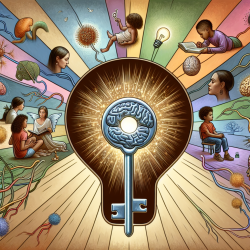Understanding the Reading Brain: Insights from Recent Research
In the ever-evolving field of speech-language pathology, understanding the intricate workings of the brain is crucial for developing effective therapeutic interventions. A recent study titled "Stroke disconnectome decodes reading networks" provides groundbreaking insights into the brain's reading circuitry, offering valuable information for practitioners aiming to enhance their skills and improve outcomes for children with reading difficulties.
The Disconnectome Approach: A New Frontier in Reading Research
The study employs a novel methodological approach known as the disconnectome to decode the reading circuitry in the brain. By mapping the interaction between functional imaging and underlying white matter networks, researchers were able to identify critical white matter connections essential for reading. This approach bridges the gap between neuropathology and cognitive neuroscience, offering a more comprehensive understanding of how brain lesions can lead to reading deficits.
Key Findings: White Matter Connections and Reading Deficits
The research highlights the importance of specific white matter connections, including fronto-parietal U-shaped fibers and the vertical occipital fasciculus (VOF), in supporting reading abilities. The study predicts that lesions impacting the left temporal, occipital, and inferior parietal gyri are most likely to result in reading deficits. These findings underscore the significance of these connections in maintaining reading proficiency and provide a framework for identifying potential areas of intervention.
Implications for Practitioners: Enhancing Therapeutic Approaches
For practitioners, these insights offer a data-driven foundation for enhancing therapeutic approaches. By understanding the specific brain networks involved in reading, speech-language pathologists can tailor interventions to target these areas more effectively. This knowledge empowers practitioners to make informed decisions, ultimately leading to better outcomes for children struggling with reading difficulties.
Encouraging Further Research: The Path Forward
While the study provides valuable insights, it also highlights the need for further research to fully understand the complexities of the reading brain. Practitioners are encouraged to engage with this research and explore additional studies that build on these findings. By staying informed and continuously seeking new knowledge, practitioners can remain at the forefront of the field and contribute to the advancement of speech-language pathology.
To read the original research paper, please follow this link: Stroke disconnectome decodes reading networks.










